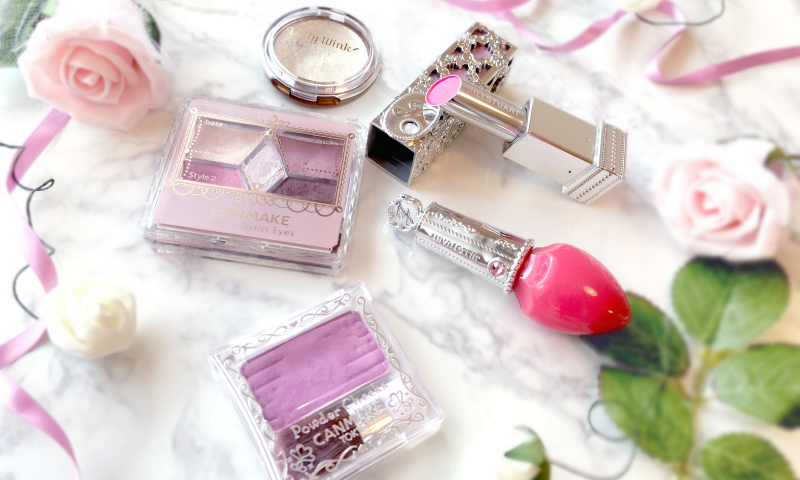
Baring it All: Idols Who Show Their Forehead With Their Hairstyle
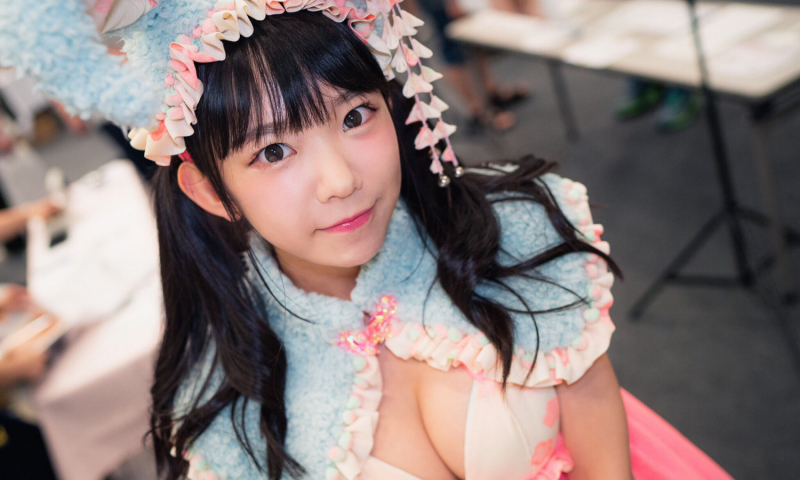
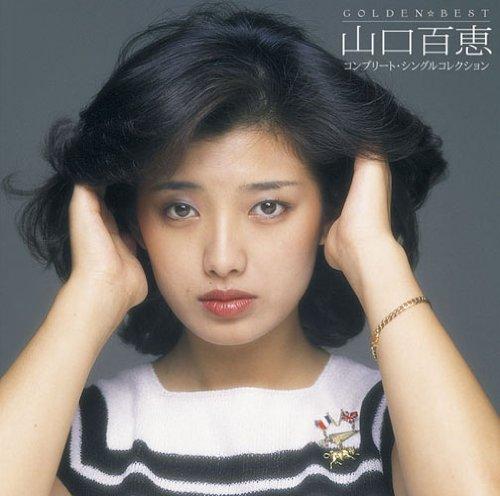
We’ve finally reached the point in this series related to discussing idols. With the arrival of Japan’s consumerist society in the 70s came the first wave of the “kawaii” (“cute”) revolution. Following the explosive hit of character-themed items from Sanrio and the like during this time, girls everywhere had a desire for “cuteness”, which turned into a commodity to be consumed, with women’s magazine an・an at the forefront of “kawaii” culture. “Cute” became a symbol, and with it, the creation of “kawaii” culture followed.
さて、いよいよこの連載もアイドルについて論じるときがきた。70年代の消費社会の到来によって生じた第一次「かわいい」革命。その時代、サンリオなどのキャラクターコンテンツが爆発的なヒットを飛ばし、当時の少女たちが「かわいい」を欲望し、消費するようになるようになり、そして「an・an」などの女性向け雑誌が「かわいい」カルチャーを牽引するようになっていった。「かわいい」がひとつの記号となって、文化を作るようになったのだ。
Read the previous volume/前回の記事を読む
Read older posts
vol.1 : Finding Where “Cuteness” Currently Lies
vol.2 : What is the Exact Origin of “Kawaii”?
vol.3 : Kawaii Culture Didn’t Exist at the Beginning of the Modern Age?!
vol.4 : Consumerist Society and the Birth of “Kawaii” Culture
vol.5 : The Word “Kawaii” Becomes Just for Girls, to Re-affirm Their Girliness
And then, as “kawaii” started appearing in television, it finally began to break out from the girls’ culture frame surrounding it, and became a dwelling place for idols. As a result, the nature of idols began to change. You can see this when comparing Momoe Yamaguchi from the 70s and Seiko Matsuda from the 80s, the stars of their decade.
そして、こうした「かわいい」はテレビの中に映し出されることで、少女文化の枠からやがてはみ出すようになり、アイドルという存在のうちがわに宿っていく。その結果として、アイドルの特質が変わっていった。そのことは70年代の山口百恵、80年代の松田聖子という、各年代を象徴するスター/アイドルを比較すればよくわかる。
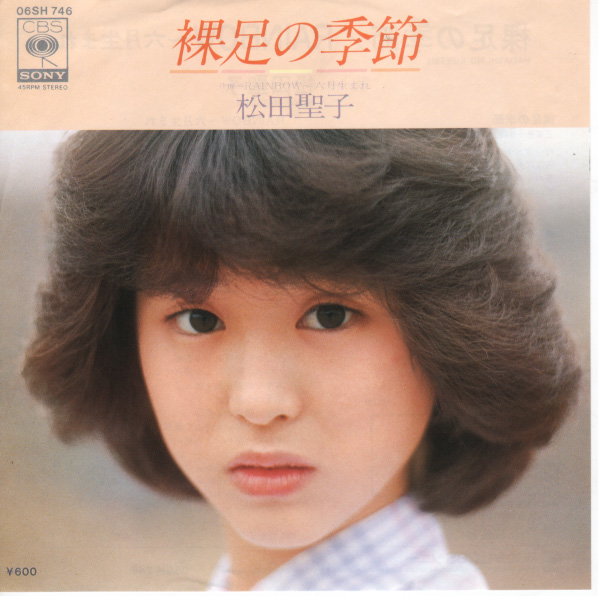
Seiko Matsuda
In fact, comparing the two was one of the central issues of 80s idol theory, and one that appeared in countless works and articles. Critic Masaaki Hiraoka sought to elevate Momoe Yaguchi to a god-like status in his essay called “Bosatsu Irai – Idol wo Sagase” / “Finding Idols After Buddha (and book titled Yamaguchi Momoe wa Bosatsu de Aru / Momoe Yamaguchi is Buddha), and feminist Chikako Ogura, who positively affirmed the life of Seiko Matsuda, garnered major attention for her “Seiko Matsuda Theory”. Additionally, Tatsuo Inamasu, discussed why each one embodied their era by comparing them side-by-side in Idol Kogaku (Idol Engineering). According to Inamasu, “They both embodied the spirit of the 70s and 80s, respectively, highlighting each era’s differences, in addition to their extremely effective subject matter.” So why don’t we first take a look at Momoe Yamaguchi.
実は、山口百恵と松田聖子の比較というのは、80年代のアイドル論の中心的な問題だった。山口百恵を神格化すること目指した批評家の平岡正明による「『菩薩』以降——アイドルを探せ」というエッセイや(平岡には『山口百恵は菩薩である』という著書がある)、フェミニストの小倉千加子が松田聖子の人生を肯定的に分析することで大きな話題を呼んだ『松田聖子論』、そして両者を並べて論じながら彼女らが時代を体現した理由を考察した稲増龍夫の『アイドル工学』など、百恵と聖子を比較した文章や記事は数え上げればキリがない。というのも、稲増が言うように、百恵と聖子という「この二人のアイドルは70年代と80年代の、それぞれの時代精神を体現するものであり、この二つの時代の違いを浮き彫りにする上できわめて有効な素材である」からだ。まずは、山口百恵について考えてみよう。

Momoe Yamaguchi
Momoe Yamaguchi’s presence was a greatly profound one in the 70s mainstream music scene. She was perhaps the first talent in Japan to give rise to the idol culture phenomenon. She made her debut in 1973 with the song “Toshigoro”. However, the emotional intensity and was absent from the music of her early years. Along with her formidable voice, she poetically and gracefully captured the feelings of a young woman. From “Yokosuka Story” (1976) onwards, the power of her music shook listeners. During the two years between this single and her image song “Playback Part 2” (1978) is a period where critic Masaaki Hiraoka records her during three types of growth, including “maturing from a girl into a woman”, “absorbing all the good qualities of newer music and introducing it into pop music, all the while dominating popular music”, and “winning over a man”.
70年代の日本の歌謡曲シーンにおいて、山口百恵はとても偉大な存在だった。彼女はおそらく日本で初めて、アイドルとしてひとつの文化現象を呼び起こしたタレントだろう。73年に「としごろ」でデビュー。しかし、初期の百恵の曲には、後年の曲に見られる情動的な激しさがない。圧倒的な歌唱力の片鱗こそ見えるものの、思春期の乙女心を軽やかに歌い上げることに終始している。彼女の曲が聴く者の心を震撼させるようなパワーを持ったのは、「横須賀ストーリー」(76年)からだ。この曲から彼女の代表曲「プレイバックpart2」(78年)までの2年間を、批評家の平岡正明は「少女から女への成熟過程」、「ニュー・ミュージックの良質な要素のすべてを歌謡曲に吸収し歌謡曲に賦活(ふかつ)させながら彼女が歌謡曲の頂点に立つ過程」、そして「女が男を制する過程」の3つの過程が記録された時期だとしている。
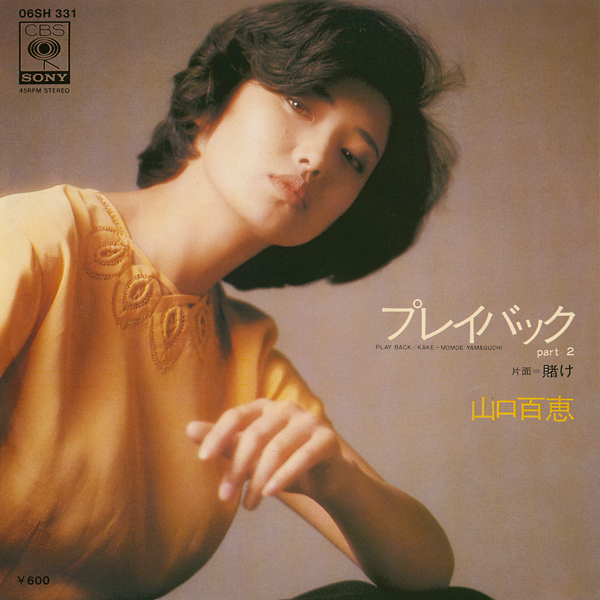
Playback Part 2
Yamaguchi’s music deeply reflects her path in life. Growing up fatherless and with little money, she finally became an idol and star looked up to by everyone. In light of her upbringing, her voice contained a “strong will to live”, which resonated with many of her fans. It was this realness that elevated her to the top of pop music. Tatsuo Inamasu says from this, Yamaguchi “broke the stereotype that defined female idols as dress up dolls”, and that “among the diversification of values in the 70s, she perpetuated the image that the Momoe you saw was her actual self”.
山口百恵の歌には彼女の「生きざま」が強く反映している。母子家庭で貧しい生活を強いられてきた百恵がやがて誰もが憧れるアイドルになり、スターになる。そういう人生を歩んできた彼女の歌声には、「生きるための強い力」が宿り、多くのファンの共感を呼んだ。そのリアルさが彼女を歌謡曲の頂点に立たせたのだ。稲増龍夫はそのことから、山口百恵とは「『女性アイドル』=着せ替え人形という通念を打破し」、「70年代の価値の多様化の中で、『ホンネ=実像としての百恵』を貫き通した存在」だといっている。
Many were captivated by Momoe Yamaguchi’s narrative and the rawness of her reality as an idol. Then, finally, she marries and becomes a mother, completing the story created by those on the other side of the TV screen. The image of her at her retirement concert, bowing to her fans before gently setting her microphone down at the center of the stage and then walking away with her back turned, is one that would be broadcast for years to come, and one that this author, who was born in the 80s, vividly remembers.
山口百恵というひとりのアイドルの「生のリアリティ」は多くの人を魅了した。そして彼女は「結婚し、母になる」というエンディングによって、ひとつの完結した物語をテレビの向こう側から描き出した。引退コンサートでファンにお辞儀をし、マイクをステージの中央にゆっくりと置きながら去っていく彼女の後ろ姿は、後年になってもたびたびテレビで再放送され、80年代生まれの筆者でも鮮明に記憶している。
Reflecting on this, you could say Momoe Yamaguchi was trying to protect her real, raw story and the image she exhibited (her real image). This is one reason why Yamaguchi’s talent was able to exceed beyond a social phenomenon and grow into a cultural one. It’s also the conclusion Inamasu draws in Idol Engineering.
そう考えると、山口百恵とは、「リアルな生の物語」とそれが映し出す実像(リアルイメージ)を堅守しようとしたアイドルだったと言えるだろう。それが、70年代に山口百恵というタレントが社会現象を超えた文化現象になった理由でもあった。稲増も『アイドル工学』のなかでそのような結論を導き出している。
Yet this begs one question. Momoe Yamaguchi was an idol. This is something a majority of spokespersons on the subject agree on. However, she was nothing like the image of idols selling “cuteness” we imagine nowadays. In fact, for all of Hiraoka’s exhausted talk about Yamaguchi’s charm and talent, and her influence on Japanese pop, nowhere can the word “kawaii” be found in “Momoe Yamaguchi is Buddha”. This might be because, in the 70s, idols and “cuteness” were not all that closely associated, or alternatively, people didn’t expect idols to be “cute” to such an extent.
しかし、ここでひとつ疑問が生まれる。山口百恵はアイドルだった。そのことは多くの論者が認めている。しかし、それは私たちが現在思い描くような、「かわいい」を売りにしたアイドルではない。実際に、平岡正明が山口百恵の魅力と才能、そして日本歌謡曲おけるその存在意義を語り尽くした『山口百恵は菩薩である』には、山口百恵を形容する言葉として「かわいい」という文字を見つけることができない。そのことは、70年代にはアイドルと「かわいい」はそれほど近しい関係性を持っていたのではなかった、あるいは、人々はそれほどアイドルに「かわいい」要素を求めなかった、ということを意味しているのではないか。
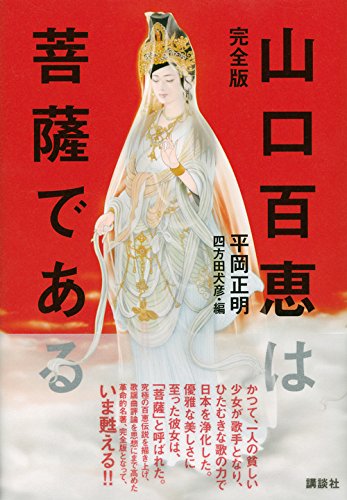
Momoe Yamaguchi is Buddha
In the 70s, the “kawaii” revolution was born, or what I propose we call the first wave of the “kawaii” revolution. However, it hadn’t become strong enough force to impact the idols of the 70s. We’ll have to wait until we reach the 80s to see the current intimate relationship between idols and “cuteness” as we know it. So, you’ll have to wait until the appearance of Seiko Matsuda. Only then will mission for the first wave of the “kawaii” be complete.
70年代、「かわいい」に革命が起こった。そのことを第一次「かわいい」革命と呼ぶことを筆者は提唱している。しかし、それは70年代にはアイドルのうちがわまで影響を及ぼす力を持たなかった。今、私たちが知っているように、アイドルと「かわいい」文化の関係性が親密なものになるのは、80年代を待たなければならない。そう、松田聖子の登場を、待たなければならないのだ。そのとき、第一次「かわいい」革命はそのミッションをコンプリートするのである。
Translated by Jamie Koide
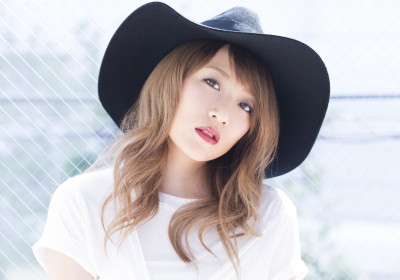
Is it Okay to Love Takamina? Minami Takahashi SHOWROOM Live Broadcast Coming Soon!
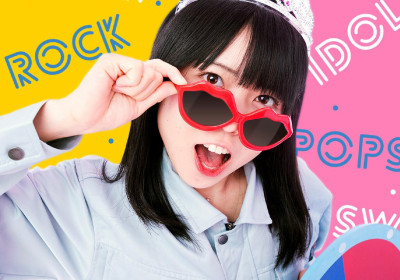
Risa Satosaki Reveals Everything in the MV for “S!NG”!


